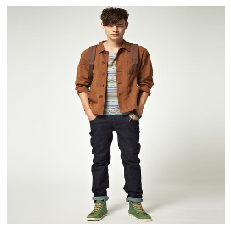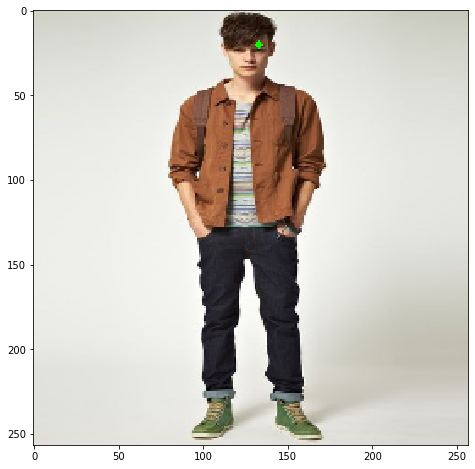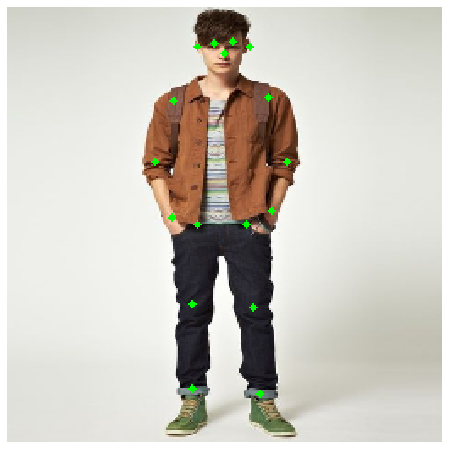Preface
tensorflow has an official attitude estimation project. This input is a little different from that of openpost. Here is a single person model output analysis scheme.
International practice, see blog:
Blog: using TensorFlow.js to realize real-time human posture detection on the browser
IOS code of posnet in tensorflow
analysis
Do not download Official overview website To download the postent, person, mobile, V1, float.tflite model, you need to download the postent, mobile, V1, 100, multi, KPT, stripped.tflite model on the IOS side. At the end of the article, you need to put the download address of the network disk.
Read model
Load the necessary kit first:
import numpy as np import tensorflow as tf import cv2 as cv import matplotlib.pyplot as plt import time
Using tflite to load model files
model = tf.lite.Interpreter('posenet_mobilenet_v1_100_257x257_multi_kpt_stripped.tflite') model.allocate_tensors() input_details = model.get_input_details() output_details = model.get_output_details()
See what the input and output are
print(input_details) print(output_details) ''' [{'name': 'sub_2', 'index': 93, 'shape': array([ 1, 257, 257, 3], dtype=int32), 'dtype': <class 'numpy.float32'>, 'quantization': (0.0, 0)}] [{'name': 'MobilenetV1/heatmap_2/BiasAdd', 'index': 87, 'shape': array([ 1, 9, 9, 17], dtype=int32), 'dtype': <class 'numpy.float32'>, 'quantization': (0.0, 0)}, {'name': 'MobilenetV1/offset_2/BiasAdd', 'index': 90, 'shape': array([ 1, 9, 9, 34], dtype=int32), 'dtype': <class 'numpy.float32'>, 'quantization': (0.0, 0)}, {'name': 'MobilenetV1/displacement_fwd_2/BiasAdd', 'index': 84, 'shape': array([ 1, 9, 9, 32], dtype=int32), 'dtype': <class 'numpy.float32'>, 'quantization': (0.0, 0)}, {'name': 'MobilenetV1/displacement_bwd_2/BiasAdd', 'index': 81, 'shape': array([ 1, 9, 9, 32], dtype=int32), 'dtype': <class 'numpy.float32'>, 'quantization': (0.0, 0)}] '''
It is easy to see that the input is a (257257) size color image.
The output is more cumbersome. There are two parts: (9,9,17) is called heatmap's heat map; (9,9,34) is called offset's offset map. In fact, if you think about it, you can also know that the heat map is used to locate the approximate position of the joint, and the offset map is used for further correction. Next, we will analyze how to use these two outputs to locate the joint position step by step.
Input image inference
You have to resize the image and then throw it in, but tensorflowjs doesn't use the resize method, I haven't tried it yet.
img = cv.imread('../../photo/1.jpeg') input_img = tf.reshape(tf.image.resize(img, [257,257]), [1,257,257,3]) floating_model = input_details[0]['dtype'] == np.float32 if floating_model: input_img = (np.float32(input_img) - 127.5) / 127.5 model.set_tensor(input_details[0]['index'], input_img) start = time.time() model.invoke() print('time:',time.time()-start) output_data = model.get_tensor(output_details[0]['index']) offset_data = model.get_tensor(output_details[1]['index']) heatmaps = np.squeeze(output_data) offsets = np.squeeze(offset_data) print("output shape: {}".format(output_data.shape)) ''' time: 0.12212681770324707 output shape: (1, 9, 9, 17) '''
Visualized transformed graph
show_img = np.squeeze((input_img.copy()*127.5+127.5)/255.0)[:,:,::-1] show_img = np.array(show_img*255,np.uint8) plt.imshow(show_img) plt.axis('off')

Analytical output
In a word, the principle is summarized as follows: the heat map divides the image into grids, and the score of each grid represents the probability of the current joint near the grid point; the offset map represents the offset of xy coordinates relative to the grid point.
Suppose to extract the coordinate position of the second joint:
-
Get the most likely grid points first:
i=1 joint_heatmap = heatmaps[...,i] max_val_pos = np.squeeze(np.argwhere(joint_heatmap==np.max(joint_heatmap))) remap_pos = np.array(max_val_pos/8*257,dtype=np.int32)
-
Add the offset. The first 1-17 is the x-coordinate offset, and the last 18-34 is the y-coordinate offset
refine_pos = np.zeros((2),dtype=int) refine_pos[0] = int(remap_pos[0] + offsets[max_val_pos[0],max_val_pos[1],i]) refine_pos[1] = int(remap_pos[1] + offsets[max_val_pos[0],max_val_pos[1],i+heatmaps.shape[-1]])
Visualization
show_img = np.squeeze((input_img.copy()*127.5+127.5)/255.0)[:,:,::-1] show_img = np.array(show_img*255,np.uint8) plt.figure(figsize=(8,8)) plt.imshow(cv.circle(show_img,(refine_pos[1],refine_pos[0]),2,(0,255,0),-1))

Mapping original graph
Because the above is the coordinate after resizing the original image by (257257), remap it according to the scale factor of the original image
ratio_x = img.shape[0]/257 ratio_y = img.shape[1]/257 refine_pos[0]=refine_pos[0]*ratio_x refine_pos[1]=refine_pos[1]*ratio_y
visualization
show_img1 = img[:,:,::-1] plt.figure(figsize=(8,8)) plt.imshow(cv.circle(show_img1.copy(),(refine_pos[1],refine_pos[0]),2,(0,255,0),-1))

Encapsulation function
The above is to extract a single joint, which is written as a function to extract the coordinates of all joints
def parse_output(heatmap_data,offset_data): joint_num = heatmap_data.shape[-1] pose_kps = np.zeros((joint_num,2),np.uint8) for i in range(heatmap_data.shape[-1]): joint_heatmap = heatmap_data[...,i] max_val_pos = np.squeeze(np.argwhere(joint_heatmap==np.max(joint_heatmap))) remap_pos = np.array(max_val_pos/8*257,dtype=np.int32) pose_kps[i,0] = int(remap_pos[0] + offset_data[max_val_pos[0],max_val_pos[1],i]) pose_kps[i,1] = int(remap_pos[1] + offset_data[max_val_pos[0],max_val_pos[1],i+joint_num]) return pose_kps
It's easy to draw functions
def draw_kps(show_img,kps): for i in range(kps.shape[0]): cv.circle(show_img,(kps[i,1],kps[i,0]),2,(0,255,0),-1) return show_img
Draw it and look at it
kps = parse_output(heatmaps,offsets) plt.figure(figsize=(8,8)) plt.imshow(draw_kps(show_img.copy(),kps)) plt.axis('off')

Epilogue
Model file: link: https://pan.baidu.com/s/1herkffz28yvampfqdeaxw password: 5tuw
Blog Code: link: https://pan.baidu.com/s/1Y7WXfQ4WC9QyOGkkN2-kUQ password: ono0

